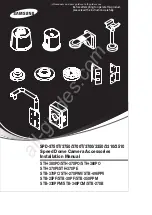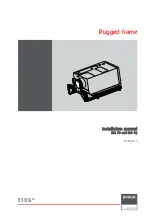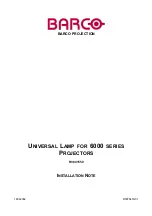
12
B
INSTRUCTIONS FOR USE:
ADJUSTING THE HELMET:
Warning:
A helmet can only provide optimum protection if it is
properly and correctly fitted to match your individual head size
and shape. If this is not the case, DO NOT USE THE HELMET.
Swap it for another size or another model. A helmet that does
not properly fit your head, or which is too loose, will significantly
impair the helmet’s protective capability.
Illustration 1
- Adjusting helmet fit to your head size: First, ex-
pand the headband to its maximum dimensions via the adjust-
ment wheel (turn anti-clockwise) and put the helmet on. Then
turn the wheel clockwise until the headband sits snug to your
head. To get the perfect fit, you can slide the headband vertically
up or down at the back.
Illustration 2
– Adjusting the chin strap: The chin strap should
sit at the sides of your head and is fastened with the buckle
under your chin. For a snug and comfortable fit, the strap length
can be adjusted under your chin. To position the strap properly
at the sides of your head, shift the divider and adjust the strap
length to fit your head shape so that the strap sits below your
ears on both sides. The straps must not cover your ears. When
the buckle is closed, the chin strap should not apply any pres-
sure on your Adam’s apple.
Illustration 3
- Attaching a headlamp: slide the headlamp strap
under the flexible clips on the outer shell and position the lamp
at the front of the helmet.
Illustration 4
– Check: When the chin strap is fastened and the
headband is flat to your head, ensure that the helmet is sitting
level horizontally and that it cannot slip forwards or backwards.
Illustration 5
- Magnetic buckle: To close: Bring both buckle
ends together so that they slot into one another. The magnetic
buckle closes with a loud click. To open: Remove the buckle
end at the bottom from the one above by pulling slightly.
Plug buckle: To close: Push both buckle ends one into another
so that they slot together. The plug buckle closes with a loud
click. To open: Press the buckle laterally.
C
SAFETY INSTRUCTIONS:
Class A and Class B helmets are
intended for alpine skiers, snowboarders and groups of a similar
nature. Class A helmets offer comparably more safety. Class B
helmets grant more ventilation and allow you to hear better. They
cover a smaller portion of your head and offer less protection
against penetration,
Always check the condition of your helmet first before using it.
Check all straps, attachment parts and make sure that the ad-
justment elements on the headband function properly.
Make sure that the helmet shape is not deformed and that it
does not have any other visible damage.
WARNING: Please note that your helmet has been designed to
absorb the maximum amount of force during impact. This is
Manual_beast_helmet.indd 12
14.02.17 11:35













































